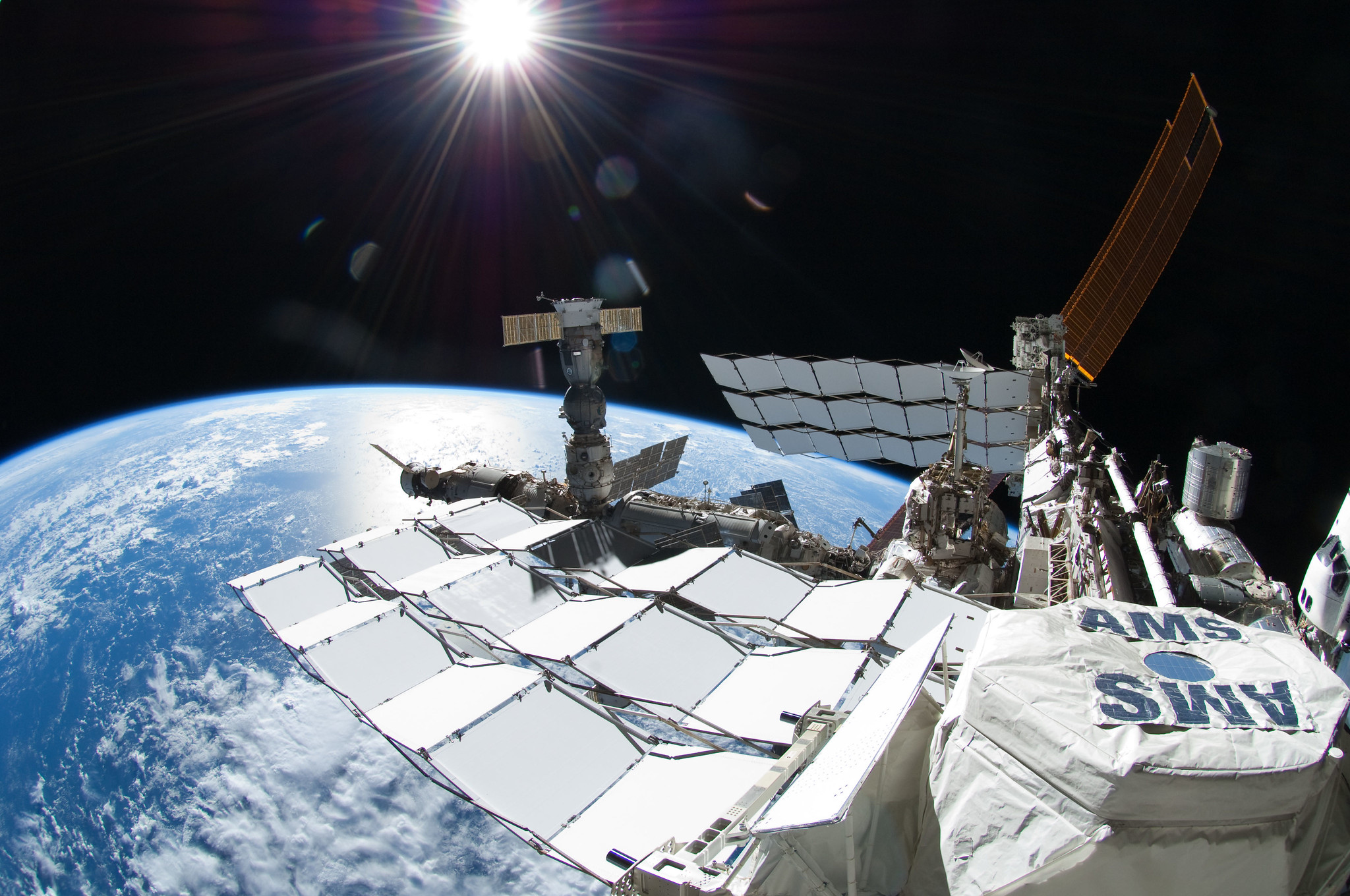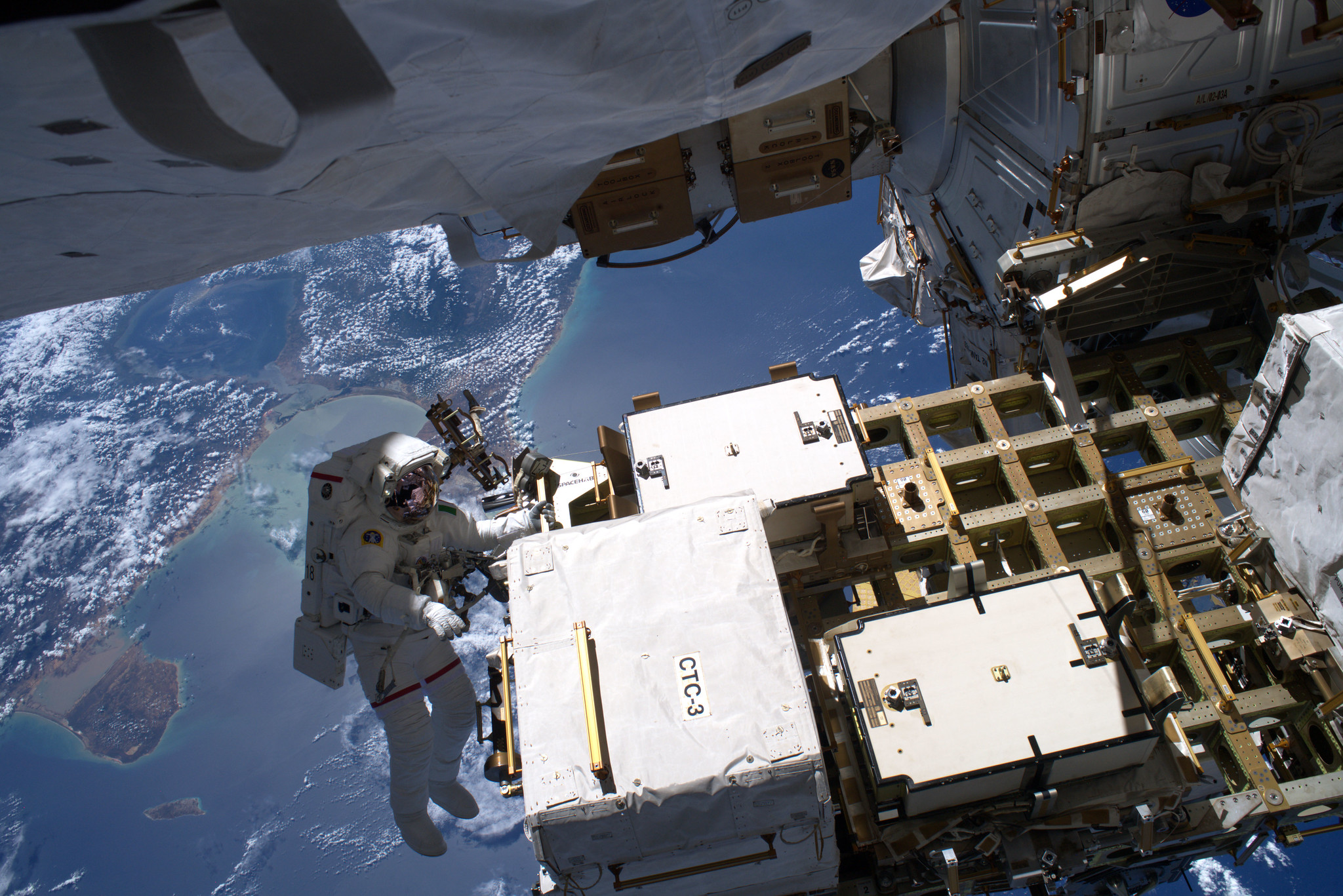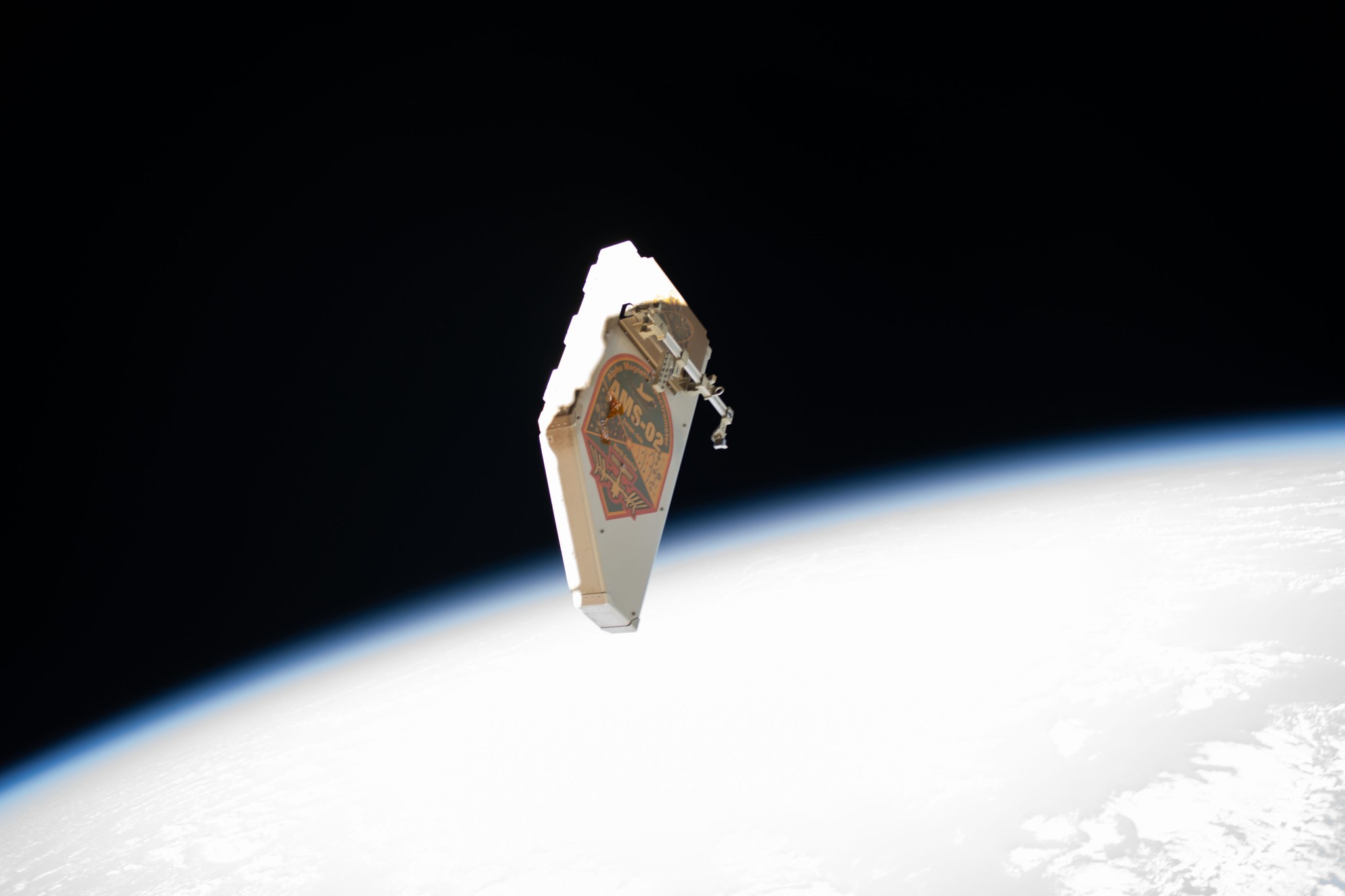Many researchers theorize stars, planets, and the molecules that comprise them are only less than five percent of the mass-energy content of the universe. As of today, May 19, 2021, the Alpha Magnetic Spectrometer-02 (AMS-02), has been a crucial part of the search to understand dark matter, matter that cannot be visibly seen but can be inferred, from the vantage point of the International Space Station for 10 years.
Installed on May 19, 2011 and initially planned to operate for only three years, AMS-02 observes cosmic ray particles. Data from these observations helps scientists understand if cosmic dark matter and antimatter potentially exist in the universe in large quantities, as well as understand the origin and propagation of cosmic ray particles in our Milky Way galaxy. These data may also help scientists better understand radiation risks for future crew missions to the Moon and Mars, as some cosmic rays can be harmful to humans.
The contribution to science
During its lifetime, AMS-02 has collected data from more than 175 billion cosmic ray events. AMS Project Manager for NASA Ken Bollweg says data collected by AMS-02 is rigorously filtered, keeping less than one of 1,000 events initially recorded. As cosmic rays enter AMS-02, not all of them travel through each of the instrument’s nine unique detectors. If a cosmic particle fails to be measured by all nine detectors, its data is not stored.
Even with its robust filtering, AMS collects and stores data for over 16 billion cosmic ray events annually.
“AMS is looking for antimatter at an unprecedented accuracy of parts per billion,” says Bollweg. This level of precision and durability has helped collect substantial amounts of valuable data that have been used to publish more than 17 scientific papers. These papers have been referenced in hundreds of other papers and articles. Led by Nobel Laureate Samuel Ting of Massachusetts Institute of Technology, the AMS Collaboration involves over 600 physicists, engineers, and technicians from 16 nations, benefiting from the international collaboration of the space station.
The massive experiment has made progress in its search for a better understanding of our universe. The AMS team reported in Physics Reports that AMS-02 detected antimatter in the forms of antiprotons and positrons. Antiprotons are the antimatter compliment of protons, and positrons are the corresponding antimatter form of electrons. In another paper published in Physical Review Letters, the investigators reported their observations of the unique differences in positron and electron activity at different energy levels. Researchers concluded that different astrophysical sources, such as dark matter and cosmic ray collisions, produce high energy positrons as oppose to those which produce high energy electrons, providing insight into origins of these particles.
Bollweg has been with the AMS project since the beginning and first met Ting and his team of researchers in 1994. “Dr. Ting was the true driving force of AMS,” says Bollweg. “He is one of the most persuasive people you will ever meet.”
Bollweg says that Ting’s vision and drive are why so many scientists have dedicated themselves to a project that took almost two decades to develop. “He convinced all of them that they should put their resources and efforts into this for years. That was all his doing.”
Spacewalks to save the science
The team behind AMS-02 has a set of innovative spacewalk repairs to thank for enabling the experiment’s research to continue for a decade. A 2015 spacewalk outfitted AMS-02 with thermal blankets to improve thermal performance and protect a subsystem of AMS from the highly variable temperatures of the space environment.
In March of 2014, the AMS-02 Tracker cooling system began showing signs of severe degradation. While only one cooling pump is needed at a time, eventually, only one of AMS’s four cooling pumps was fully functional. This left no backup in case of the final pump’s failure, leading to the need for more extensive repairs. AMS-02 was not designed to be repaired because its initial mission was intended to last for only three years, and 29 specialized tools had to be designed and manufactured to assist the crew with the intricate spacewalk repairs. Over the course of four spacewalks in 2019 and 2020, Parmitano and Morgan successfully replaced AMS’s failing cooling pumps.
Timeline of Spacewalks
- 5/19/2011: Installation onto the International Space Station
- 10/28/2015: Former NASA astronaut Scott Kelly and NASA astronaut Kjell Lindgren install the Alpha Magnetic Spectrometer (AMS) Blanket and the wedge for its Tracker Thermal Control System (TTCS) during Extravehicular Activity (EVA) #32.
- 11/15/2019: Luca Parmitano and Andrew Morgan conduct AMS EVA #1, removing the AMS debris shield and Vertical Support Beam (VSB) Cover.
- 11/22/2019: Parmitano and Morgan conduct AMS EVA #2, installing the Mechanical Attachment Device, preparing the power cable, and performing rough cuts of the cooling system tubes that carry the two-phase CO2 coolant.
- 12/02/2019: Parmitano and Morgan conduct AMS EVA #3, installing the Upgraded Tracker Thermal Pump System, a primary objective for the AMS repairs.
- 1/25/2020: Parmitano and Morgan conduct AMS-02 EVA #4, a 6-hour 16-minute spacewalk to complete the final AMS-02 repair series. Their accomplishments include leak checks of reconnected tubes and MLI tent installation.
The future of AMS-02
AMS has come a long way since its initial 3-year mission. Bollweg says AMS’s journey to and aboard the space station has been a rewarding ride. “AMS was supposed to be a project, and it ended up being a career.”
By continuing to measure cosmic ray particle events, AMS is improving its detection accuracy and refining potential astrophysical interpretations of this AMS data. Bollweg says that AMS is also now being evaluated as a tool for studying space weather and its impact on satellite communications. “Our plans are to keep AMS operating on the International Space Station as long as there is a space station.”
For daily updates, follow @ISS_Research, Space Station Research and Technology News or our Facebook. For opportunities to see the space station pass over your town, check out Spot the Station.
Lauren Prox
International Space Station Program Research Office
Johnson Space Center

























